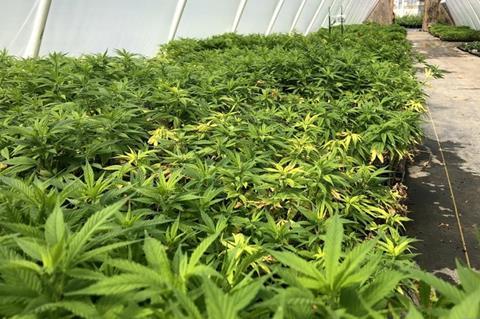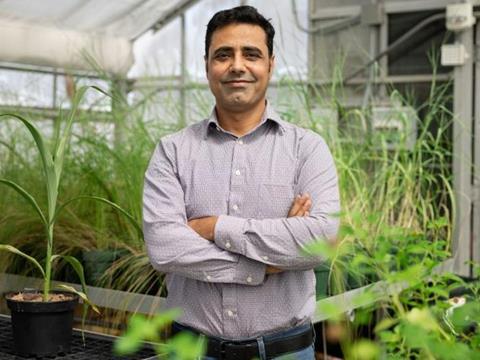Hemp has become increasingly popular for its versatile uses: CBD-rich varieties are in high demand for pharmaceutical products, while fiber-rich varieties are valued for industrial applications like textiles. Now, a new University of Houston study of hemp microbes, published in the journal Nature, may help scientists create special mixtures of helpful microbes to make hemp plants produce more CBD or have better-quality fibers.

As a community of tiny organisms including microbes, the plant microbiome helps plants absorb nutrients, handle stress and produce valuable compounds.
The study, led by Abdul Latif Khan, assistant professor of biotechnology at the Cullen College of Engineering Technology Division, examined the communities of microbiomes living in and around the roots (rhizosphere) and on the leaves (phyllosphere) of four types of hemp plants. Khan’s team also compared how these microorganisms differ between hemp grown for fiber and hemp grown for CBD production.
Microbial communities
“In hemp, the microbiome is important in terms of optimizing the production of CBD and enhancing the quality of fiber. This work explains how different genotypes of hemp harbor microbial communities to live inside and contribute to such processes,” reports Khan. “We showed how different types of hemp plants have their own special groups of tiny living microbes that help the plants grow and stay healthy.”

“Understanding these microorganisms can also lead to more sustainable farming methods, using nature to boost plant growth instead of relying heavily on chemicals,” said Waqar Ahmad, the paper’s first author and doctoral student of Khan’s.
Among the findings:
· Microbiome diversity was significantly different in soil, root, leaf, stem - and also in CBD and fiber genotypes.
· Roots and soil showed higher bacterial diversity
· Leaves and stems had higher fungal diversity.
· Bacteria such as Sphingomonas, Pseudomonas and Bacillus were highly present among the hemp plants that produced fiber.
· Microbacterium and Rhizobium were more abundant in CBD-producing hemp as were fungi like Penicillium and Nigrospora, but fungi Alternaria and Gibberella were associated with fiber plants.
Endophytic microorganisms
“Different genotypes have different microbiomes, affecting physiology, nutrient uptake, stress resilience, and production of secondary metabolites such as CBD. Our findings might suggest that these endophytic microorganisms have a major role in impacting CBD production and high-quality fiber in hemp,” said Khan.
READ MORE: Cannabis: The new antiviral hero?
READ MORE: Cannabis shows potential as weapon in the fight against COVID-19
The team included Venkatesh Balan, UH associate professor of biotechnology at the Cullen College of Engineering Technology Division; Aruna Weerasooriya, professor of medicinal plants at Prairie View A&M University; and Ram Ray, professor of agronomy at Prairie View A&M University.
Topics
- Abdul Latif Khan
- Agriculture
- Alternaria
- Bacillus
- CBD
- Early Career Research
- Gibberella
- Healthy Land
- hemp
- Microbacterium
- Nigrospora
- Penicillium
- Pharmaceutical Microbiology
- Prairie View A&M University
- Pseudomonas
- Ram Ray
- Research News
- Rhizobium
- Soil & Plant Science
- Sphingomonas
- University of Houston
- USA & Canada
- Venkatesh Balan
- Waqar Ahmad







No comments yet